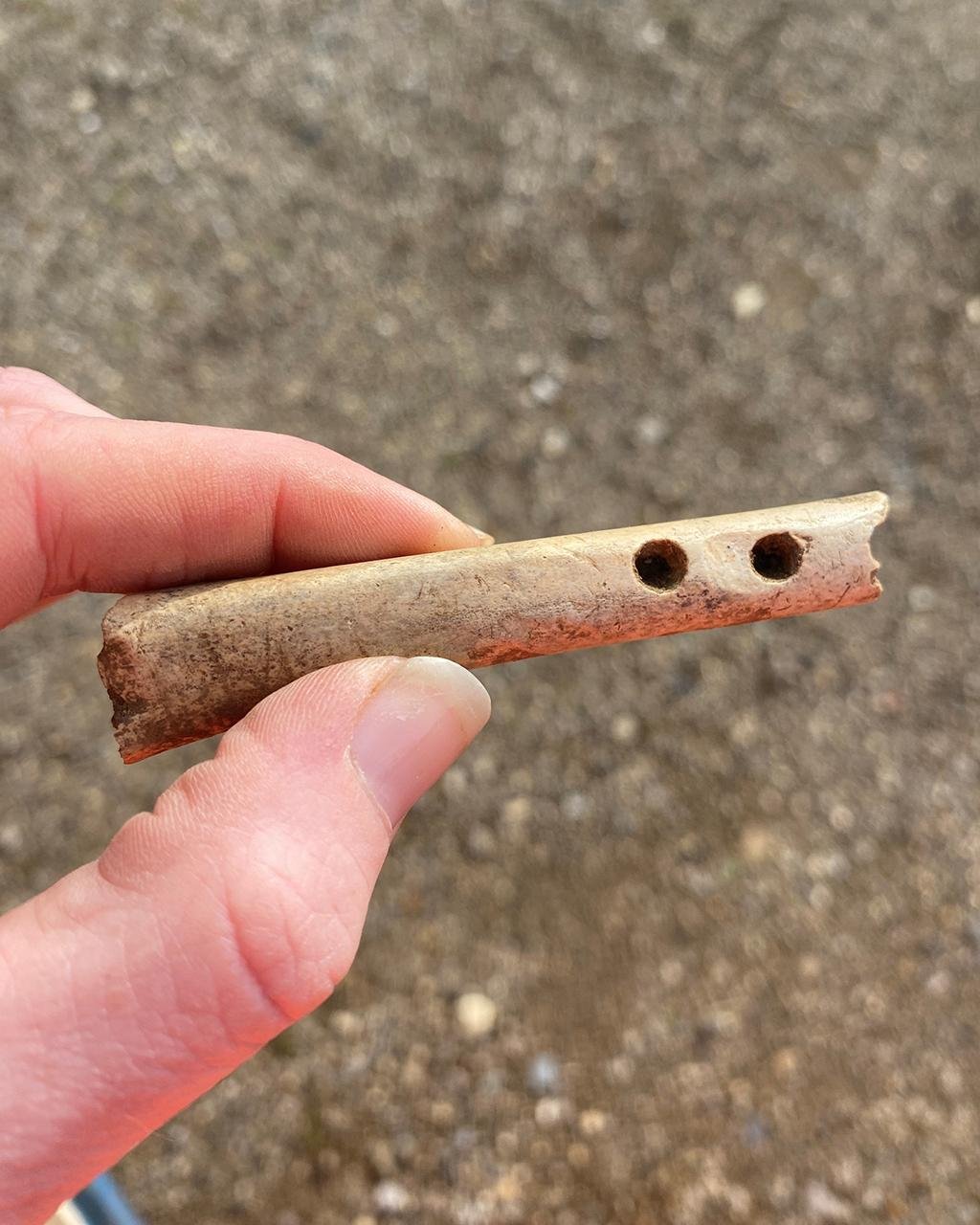Thousands of years of Norfolk’s hidden past have been revealed through archaeological excavations carried out under the A47 road improvement project between North Tuddenham and Easton. Conducted alongside National Highways‘ works to expand the road, the extensive excavations uncovered a trove of artifacts ranging from medieval village remnants to hunting tools.
 One of the spearheads uncovered during the A47 dualling work between Easton and North Tuddenham. Credit: Headland Archaeology
One of the spearheads uncovered during the A47 dualling work between Easton and North Tuddenham. Credit: Headland Archaeology
The discoveries were made during the dualling of the A47. But while the road work focuses on easing modern mobility, the team of archaeologists has uncovered significant discoveries regarding past communities that occupied the region.
Among the finds are medieval spearheads used both for hunting and in battle, remains of deserted village settlements, and artifacts that provide us with insight into the lives and challenges of Norfolk’s earlier inhabitants. The discoveries will be exhibited at the upcoming Norfolk Show (25 and 26 June). They can be viewed at National Highways’ Stand 217, Avenue 10, where archaeologists and project team leaders will be available to share details of the discoveries.
National Highways’ A47 project leader Chris Griffin said: “Our works are primarily about improving safety on the roads, but they also present a great opportunity, through the archaeology, to find out more about the wonderfully rich cultural heritage in Norfolk.”
 A bone flute discovered during the A47 dualling excavations. Credit: Headland Archaeology
A bone flute discovered during the A47 dualling excavations. Credit: Headland Archaeology
The excavation was carried out by Headland Archaeology using a mix of heavy equipment and traditional hand tools. Over 600 soil samples were processed, and over 30 kilograms of material—including pottery, metalwork, carved stone, and animal remains—were recovered. Highlights included personal items such as a bone flute and decorative buckles.
As described by Kate Bain, Project Manager with Headland Archaeology, the site has a sad story to tell: “There was a huge increase in population in medieval Norfolk, where farming and technology were advancing. People were farming more and more crops. Unfortunately, it coincided with a climate change event called the ‘medieval warm period,’ when it started to get warmer and wetter, and those crops started to fail, which exposed the population to famine and disease. Then came the Black Death, which wiped out 60 per cent of the population. So, these villages, which would have been recognisable all the way through the landscape like little hamlets, disappeared as people fled to urban settlements, leaving them behind.”
 The project has revealed archaeological traces from multiple eras. Credit: Headland Archaeology
The project has revealed archaeological traces from multiple eras. Credit: Headland Archaeology
The broader A47 project has revealed archaeological traces from multiple eras—prehistoric to Roman, Iron Age, Anglo-Saxon, and medieval—demonstrating the historical richness that lies not far beneath modern-day roads in Norfolk.
For those interested, the public is welcome to hear more from the National Highways and archaeology teams at the Royal Norfolk Show on June 25–26, 2025.
More information: National Highways





